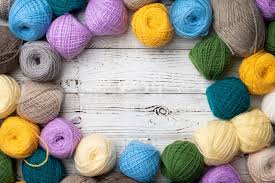In recent years, there has been a growing return to natural, sustainable materials in every corner of life — from fashion to furniture, from home insulation to interior design. One such eco-friendly material that’s making a remarkable comeback is wool, used in a variety of forms. Among these, Wollmatten (wool mats) have become particularly popular for their comfort, versatility, and sustainability. Whether used for insulation, yoga, crafts, or even gardening, Wollmatten are an ingenious fusion of tradition and modern innovation.
In this article, we’ll explore what Wollmatten are, how they’re made, their various uses, environmental benefits, and how you can incorporate them into your lifestyle.
What Are Wollmatten?
The word “Wollmatten” is German for “wool mats.” These are thick layers or sheets made from natural sheep’s wool, compressed and treated (sometimes needle-felted) into durable mats. Depending on their purpose, Wollmatten can be pure wool or a blend of natural fibers, sometimes reinforced with jute, hemp, or synthetic binders.
Unlike conventional synthetic mats, Wollmatten breathe, absorb moisture, and regulate temperature — making them ideal for a wide range of uses. From floor insulation in eco-homes to cushioning layers in yoga studios, their natural softness and resilience make them both comfortable and practical.
The Craft and Creation of Wollmatten
Producing Wollmatten is an art that combines ancient craftsmanship with modern technology. The process typically includes the following steps:
- Sourcing the Wool:
High-quality sheep’s wool is collected, often from local farms that prioritize ethical and sustainable practices. The most common sources are sheep breeds known for dense, durable wool like Merino, Bergschaf, or Suffolk. - Cleaning and Sorting:
The raw wool is carefully washed to remove lanolin, dirt, and plant matter. This ensures that the end product remains hygienic and free of allergens. - Carding and Layering:
The wool fibers are then carded — combed into alignment — and layered to achieve the desired thickness and density. For insulation purposes, thicker and denser layers are preferred. - Felting or Needle Binding:
Through mechanical or wet-felting processes, the wool fibers are bonded together. This creates a strong mat that maintains structure while remaining flexible. - Cutting and Finishing:
Finally, the mats are cut into various sizes depending on their intended application. Some are left natural, while others may receive an eco-friendly treatment for durability or moth protection.
The result is a soft yet sturdy mat that is biodegradable, renewable, and toxin-free.
Different Types of Wollmatten
Wollmatten come in several forms depending on their composition and use:
- Insulation Wollmatten:
Used in sustainable building and renovation, these mats provide natural thermal and acoustic insulation. They’re ideal for walls, ceilings, and floors. - Yoga and Meditation Mats:
Wool mats have gained popularity among yoga practitioners for their comfort, natural texture, and grounding properties. - Craft and Decorative Wollmatten:
Crafters use smaller wool mats for felting projects, rug making, or as a natural base material for artistic designs. - Gardening and Landscaping Mats:
Wool mats can also serve as a weed-suppressing layer in gardens or as root protection in planters. The wool slowly decomposes, releasing valuable nitrogen into the soil.
Environmental Benefits of Wollmatten
One of the main reasons Wollmatten are celebrated is their eco-friendly profile. As the world becomes more conscious of the environmental impact of everyday materials, wool stands out for several reasons:
- Renewable Resource:
Wool grows naturally on sheep and is harvested annually without harming the animals. It’s a fully renewable fiber source. - Biodegradability:
Unlike plastic-based materials, wool decomposes naturally, enriching the soil rather than polluting it. - Carbon Sequestration:
Wool fibers capture and store carbon, helping offset emissions during their lifecycle. - Non-Toxic and Safe:
Wool contains no harmful chemicals, making it safe for use around children, pets, and sensitive individuals. - Durability and Longevity:
High-quality Wollmatten can last for decades, reducing waste compared to synthetic alternatives that wear out quickly.
By choosing Wollmatten over petroleum-based materials, consumers directly contribute to a healthier planet and home environment.
Wollmatten in Home Design and Architecture
Architects and interior designers are increasingly turning to Wollmatten as part of eco-friendly building strategies. Their excellent thermal insulation properties help reduce heating costs in winter and cooling needs in summer. Wool’s natural ability to regulate humidity makes indoor spaces feel fresher and more balanced.
Moreover, wool’s sound-absorbing quality reduces echoes and noise pollution, which is particularly beneficial in open-plan offices, recording studios, or residential spaces.
Some modern eco-homes feature wool-insulated walls and floors paired with natural clay plasters and wooden finishes. The result is a breathable, toxin-free environment that supports both physical comfort and mental well-being.
Wollmatten for Yoga and Wellness
Beyond architecture, Wollmatten have also made their way into the wellness world. Wool yoga mats offer unique benefits that synthetic mats simply can’t match:
- Temperature Regulation: Keeps you warm during relaxation and cool during intense sessions.
- Natural Cushioning: Provides gentle support for joints without being overly springy.
- Grounding Effect: The natural texture of wool connects practitioners to the earth’s energy.
- Odor Resistance: Wool naturally resists bacteria and smells, making it ideal for repeated use.
- Eco-Friendliness: Biodegradable and toxin-free — perfect for a mindful, sustainable lifestyle.
In many yoga traditions, natural materials are considered sacred, symbolizing purity and connection to nature. Thus, Wollmatten align perfectly with the holistic principles of yoga and meditation.
DIY and Crafting with Wollmatten
If you love DIY projects or crafting, Wollmatten offer endless creative possibilities. You can:
- Cut them into smaller pieces for table runners or coasters.
- Use them as base layers for needle felting projects.
- Make wool seat pads for chairs and benches.
- Combine them with natural dyes for art installations or wall decor.
Their unique texture adds warmth and character to any handmade creation.
Wollmatten in Gardening and Agriculture
An unexpected but highly practical use of Wollmatten is in horticulture. Farmers and gardeners use wool mats as mulch layers to prevent weeds and retain soil moisture. Over time, the wool decomposes, improving soil fertility.
Wollmatten also act as frost protection for sensitive plants during winter. They can be wrapped around plant pots or laid on the ground to keep roots insulated.
This natural solution replaces plastic-based garden fabrics and contributes to regenerative agriculture practices.
Caring for Your Wollmatten
To ensure longevity, Wollmatten should be maintained properly:
- Keep them dry: Although wool can handle moisture, long-term dampness can cause mold.
- Air them out regularly: Fresh air keeps wool smelling clean and natural.
- Spot-clean with mild soap: Avoid harsh detergents that strip natural lanolin.
- Store in breathable bags: Never seal wool in plastic; it needs to breathe.
With minimal care, Wollmatten can last for years, maintaining their structure and effectiveness.
Where to Buy Wollmatten
Wollmatten can be found from eco-friendly building suppliers, organic lifestyle brands, and specialty craft stores. In Germany and across Europe, companies like Thermo Natur, Isolena, or Hofschaferei offer certified wool insulation and mats. Many online marketplaces also carry smaller wool mats for personal use or crafts.
When purchasing, always check for certifications such as:
- GOTS (Global Organic Textile Standard)
- OEKO-TEX Standard 100
- Woolmark Certification
These ensure the wool is ethically sourced, non-toxic, and environmentally processed.
Conclusion: The Timeless Appeal of Wollmatten
In a world increasingly dominated by synthetic materials, Wollmatten represent a refreshing return to nature. They embody the balance between functionality, beauty, and sustainability. Whether you’re designing an eco-home, deepening your yoga practice, or creating art, wool mats offer an authentic and environmentally responsible option.

